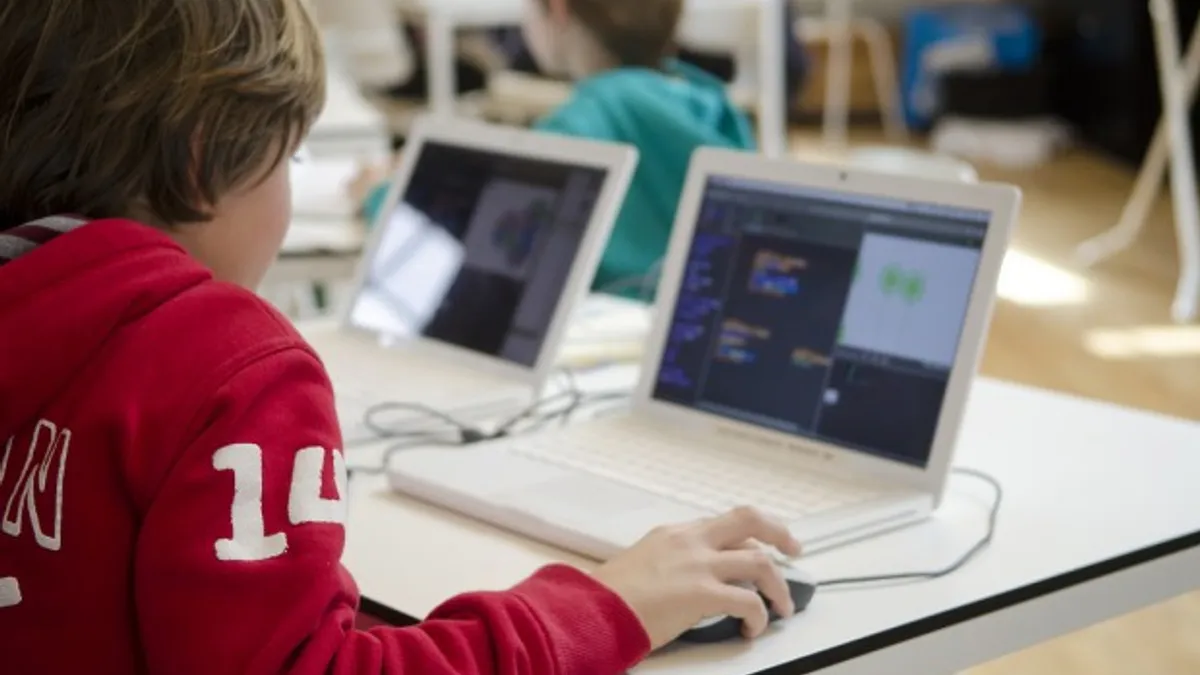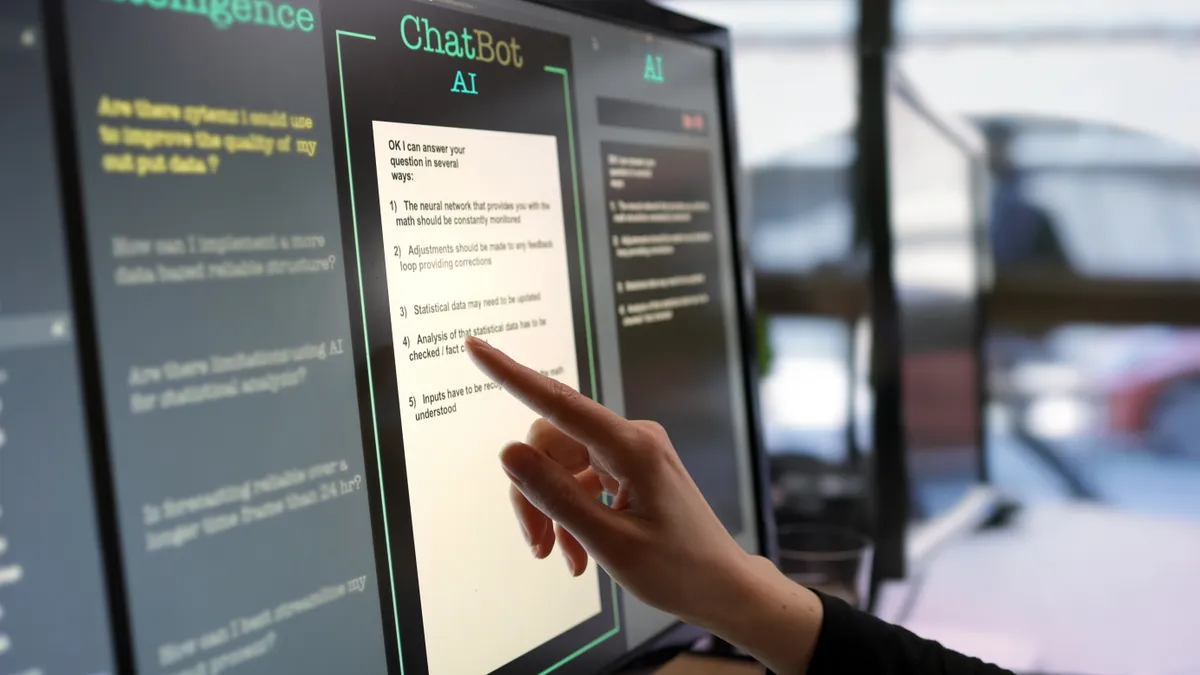As cliché as it may sound, it's an exciting time for K-12 education. On top of a year that saw a record $1.85 billion invested in educational technology, Congress finally passed a rewrite of the much-maligned No Child Left Behind in the form of the Every Student Succeeds Act. With the latest iteration of the nation's top educational law set to take effect in the fall and money likely to continue flowing into ed tech, there's sure to be plenty in store for schools and districts in 2016.
With educators and students getting back into the grind for the latter half of the 2015-16 school year, we reached out to two tech leaders for their thoughts on the biggest ed tech issues, developments, and trends administrators will have to face this year. And for further insight, be sure to check out Education Dive's recent survey on the state of K-12 ed tech.
Privacy concerns and funding continue to present obstacles
Student data privacy has long been a thorn in the side of school and district tech leaders, and that's likely to remain the case for at least another year or two, said Robert Craven, senior director of information technology at Tustin Unified School District in California. Of course, the cost of ensuring that -- accompanied by the necessity for technology and fast, reliable network access -- will also remain a hurdle as schools and districts in a number of states grapple with funding concerns.
"Making sure this is always up is not inexpensive, and as the requirement for technology and the network to be up 100% of the time, cabinets and boards must be sure their budgeting enables this reality," said Craven, who cited the cost of 1:1 device programs. That question in particular becomes muddled by the need to define students' responsibility for their device, including how a state holds them accountable for losses or damages.
"Let’s face it: Budgets for technology, whether in the public or independent K-12 sector, are always a challenge," said David Hinson, director of technology services for Yeshivah of Flatbush in Brooklyn, NY. "And, just because you have solutions and platforms in place, doesn’t mean that it’s all smooth sailing, forever and ever."
For example, noted Hinson, a particular Smart Board model could have hard-to-find bulbs or replacement parts, or the hardware for your wireless access points could get "aged out" of the product cycle, limiting availability of updates and support. This leaves tech administrators faced with a decision of upgrading or being stuck between a rock and a hard place — and that decision becomes even murkier if you have, say, a mix of 802.11b and 802.11ac wireless access points running off the same controller.
"Even for the best maintained and wellkept shops, hardware becomes obsolete, and you need to have a plan in place for fleet and equipment replacement before a plan is imposed upon you, by necessity, circumstance, or calamity," said Hinson.
As with higher ed, getting beyond marketing and determining what tech is best for a school or district's needs will also become a greater issue as increasingly staggering investment attracts more players to ed tech.
But that investment also comes with increasing backlash, fueled in part by an Organisation for Economic Cooperation and Development study released in the fall that found tech doesn't always improve student learning. The most significant educational impacts of technology, it said, come primarily with moderate use. "I believe those of us in educational technology leadership positions must be cognizant that this is gaining some ground perhaps impacting deployments and rollouts," said Craven.
Ed tech investment will feed developments, SaaS to gain traction
Craven sees last year's $1.85 billion in ed tech investment feeding a flurry of incredible teaching and learning software on the horizon. There exists what is, perhaps, a perfect storm to facilitate that, as the FCC's expansion of E-rate in regard to dark fiber and network equipment is set to provide easier, more cost-effective, reliable, high-speed connectivity for students, teachers, and staff — right as the Internet of Things is poised to establish a presence in K-12. According to Craven, the first real impacts of the latter are likely to be felt by the end of the year. This year, he added, may even be the year 1:1 becomes the norm.
"It’s been said before, but the movement seems more widespread then ever before," said Craven.
He also expects to see high-quality, collaborative assessment apps like Verso and Pear Deck become more commonplace. "The app-happy, 'download everything' teaching seems to be evolving into a core of LMS, Google Docs, a Verso/PearDeck app, PDF annotation app, note taking app, and a few selected apps that rotate based upon activity," said Craven.
And speaking of software, school and district leaders are likely to benefit from new, high-quality Software as a Service platforms when it comes to performing their jobs. "Technology Service and IT departments in K-12 will always be undermanned and understaffed with regard to their 'talent inventory,'" said Hinson, "but the ready availability of solid, dependable, and friendly SaaS platforms is allowing even the smallest of technology departments to 'punch above their weight.'"
Also making things easier: An influx of Teacher on Special Assignment (TOSA) and coaching positions. The former is typically a supervisory or semi-administrative position, while the latter is designed to better assist educators with professional development. Craven said that these are being further facilitated by ISTE and CUE.
STEM and STEAM reign supreme, but plenty of room for change among trends
STEM and STEAM programs should maintain their pace of adoption in 2016. "Districts everywhere are starting them up for students," said Craven. "Right now there are some terrific examples of long-standing programs — we’ve a few here in Tustin Unified — with great success, but when the initial 'wow factor' of the 3D printer or robot wears off, is there enough expertise to sustain the program both on the teaching end and leadership end? I certainly hope there is, but this is one movement that is approaching the time where it will evolve into a long-standing educational standard or become a bit part at all but a few schools."
Hybrid and blended learning aren't going away anytime soon, either, as "the combination of Google Drive, LMS, and some great assessment apps are going to push this forward very quickly," said Craven. With this, he added, will also come a need to close the "homework gap."
Hinson sees institutions with longstanding iPad or Chromebook deployments either reinvesting in their 1:1 ecosystem or trying something new entirely — and there's certainly room to experiment. "3D Printing and Virtual Reality are still very much niche technologies," he said, "while the educational penetration of the Internet of Things is just now beginning to impact a broader educational audience, thanks in no small part to the success of platforms like the Arduino, the Raspberry Pi, and the commercial success of consumer IoT products like the Nest Thermostat and Nest Dropcam."
One area where he'd like to see a trend is more schools having a plan when they choose to adopt technology, thus avoiding "buyer's remorse." Pedagogy, he said, should drive classroom tech, and not the other way around.
"I think that if one truly wishes to foster technological innovation in the classroom," said Hinson, "you need to incentivize faculty and staff in meaningful ways; to entice them to experiment with technology, either through formal recognition of technology innovation, as part of their assessment cycles within their tenure and promotion processes, or — through a very real support of technology practice and professional development — putting our money where our collective mouths are as administrators and leaders."
Similar to that sentiment is Craven's assertion that a number of new services believe K-12 is "flush with money," charging budget-breaking prices for their solutions. Of course, this will only lead districts to become much more selective of the products they adopt as they attempt to stretch budgets that are, in some cases, already too thin.
"While the budget outlook is better now than it’s been for years a $10 or $15 per student service per year is far too expensive for K12 education," said Craven.
Would you like to see more education news like this in your inbox on a daily basis? Subscribe to our Education Dive email newsletter! You may also want to read Education Dive's look at 4 K-12 tech developments to keep an eye on in 2016.





















